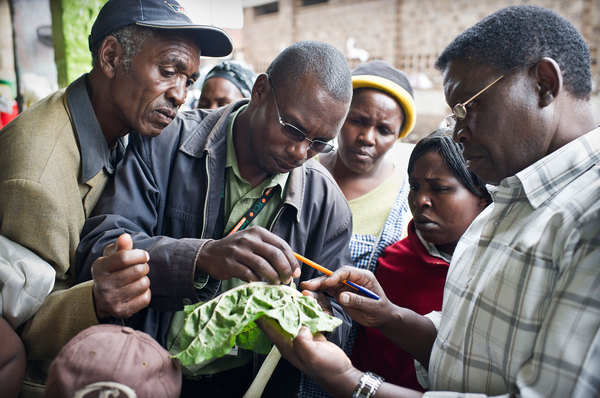Robert Reeder on Protecting Banana Crops
“Bananas, along with lots of crop plants are under threat from pests and diseases. The reason that bananas are particularly threatened is their lack of genetic diversity.” Listen to CABI’s very own Rob Reeder talk to Greg Peterson on this podcast from The Urban Farm. Rob talks in detail about the increasing threat to the…
Developing pest-smart farmers in Cambodia
In Rohal Suong Climate-Smart Village, adoption of ecological engineering practices has improved farmers’ ability to prevent pests and diseases outbreaks while reducing pesticides use. Every year, a great portion of Cambodian farmers’ income is at risk because of possible pests and diseases (P&D) outbreak. Aside from the inadequate knowledge of farmers, climate change aggravates the…
Lead battery soil contamination in Africa and the implications on plant and human Health
Globally, battery manufacturing and recycling plants have been identified as the major sources of soil lead contamination that have resulted in lead exposure to neighbouring communities via the accumulation of lead within plants. Lead is naturally found in soil in relatively low concentrations (10-50 mg/kg) in which it is taken up by plants via the…
Update: New Pest & Disease Records (5 Jan 18)
We’ve selected a few of the latest new geographic, host and species records for plant pests and diseases from CAB Abstracts. Records this fortnight include the first report of the golden apple snail (Pomacea canaliculata) in Iraq, the first report of Ceratocephalus falcatus smut caused by Urocystis eranthidis and a new species of thrip (Genus: Odontothrips)…
Update: New Pest & Disease Records (15 Dec 17)
We’ve selected a few of the latest new geographic, host and species records for plant pests and diseases from CAB Abstracts. Records this fortnight include a first report of snow mould (Typhula cf. subvariabilis) in Antarctica, the first report of Drosophila suzukii and the black locust gall midge (Obolodiplosis robiniae) in Poland.
Rhodococcus 'Jekyll and Hyde' Bacteria Discovered in Plant Nurseries
Researchers at Oregon State University (OSU) have used genome sequencing to identify species of the soil bacteria genus Rhodococcus that is commonly associated with stimulated growth patterns in a number of plant species. Herbaceous perennials such as chrysanthemum, speedwell and Shasta daisy are primarily affected by this bacterium.
E-plant clinics launched in Mozambique
E-plant clinics have been successfully launched in Mozambique this November, following two trainings and official launches. The trainings took place in a village called Tenga, Moamba near the capital city of Maputo (around 80 km), and in Morrumbene District near the city of Inhambane. Training was delivered in partnership with the National Directorate of Agricultural…
The disease that could change how we drink coffee
Reblogged from BBC Future Written by Jose Luis Penarredonda If you landed in Bogota in the 1960s, one of the first things you would have probably seen outside the airport was a giant billboard. In a slightly menacing tone, it said: “Coffee rust is the enemy. Don’t bring plant materials from abroad”. It was one…
Más que un microscopio: El laboratorio de plantas en Comarapa, Bolivia
Ladiplantas (Laboratorio de Plantas) que se ubica en el pueblo agrícola de Comarapa, en los cálidos valles andinos de Bolivia, está bien integrado a la comunidad local. Ladiplantas es manejado por la Ing. Olivia Antezana, como parte del Centro de Investigación Agrícola Tropical (CIAT), de la Gobernación del Departamento de Santa Cruz, desde el 2000…
Diagnostics in action: A proactive plant laboratory in Comarapa, Bolivia
Ladiplantas (Plant Laboratory) in the agro-town of Comarapa, in Bolivia’s low Andean Valleys, is well integrated into the farming community. Ladiplantas is run by agronomist Olivia Antezana, as part of CIAT (Research Centre for Tropical Agriculture), of the Departmental government of Santa Cruz, since 2000 (Bentley and Boa 2004). CIAT is one of the three…


